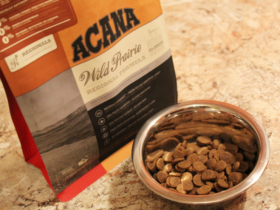Living in your own house built on your own land is a dream of almost every person, regardless of whether he has a family, or he is lonely. Modern equipment allows you to make engineering networks of a private house absolutely autonomous and highly automated, which will make living in a private house an identical living in a city apartment.
Strong and durable silicate brick houses for verification turn out to be very cold and raw. The heat of them quickly disappears, forcing their owners to decently spend on fuel to maintain a comfortable temperature, and modern wooden houses do not reach the heat -insulating properties to their pre -revolutionary counterparts, since the beam with a thickness of 150x150mm/ does not hold heat in the house not only in winter, but also late autumn. In order for a wooden house to show all its best thermal insulation qualities, you need lumber with much larger dimensions, which is expensive.
Types of thermal insulation. Ways of insulation
But in both cases, it is possible to correct the situation by applying thermal insulation materials. Thermal insulation of the building can be internal and external.
External thermal insulation of the walls of the house is often more preferable, and for buildings that are already built, such isolation is often the only possible option for insulation of the house. But with buildings that have value, like architectural monuments, the opposite. Only internal thermal insulation of the premises is possible there.
Thermal insulation materials are numerous and very different from each other in their intended purpose, their origin and appearance. They can be rudely divided into materials of organic and inorganic origin. Natural materials such as wood fibers, flax and paper, as well as moss, reeds are well known and used since ancient times. Modern heater are industrial products, which, however, does not deprive them of the mass of very useful qualities. This is most often used in the construction of glass wool, polystyrene foam, expanded clay, perlite and many other materials that have the overall purpose of insulation, but used to warm different parts of the structure of the house.
Since most of the territories of our country are deprived of natural stone deposits, the brick everywhere occupied the leading positions as a structural material for the construction of private houses together with lumber.
This material is good for everyone, only its thermal conductivity is three times greater than that of wood. Heat loss when heating a house made of brick is up to 35%. So much more will have to spend fuel to support the already reached comfortable temperature at the proper level. To reduce such heat loss, even during the construction of the house, a whole range of works is carried out, in which walls, roof, floor and ceiling are insulated.
The thickness of the brick wall affects the choice of insulation and its thickness, a hollow or whole brick was used for masonry, and the masonry technology itself. You can build on the fact that the brick wall, folded in one brick, loses about a third of heat during heating of the house per unit time. Bricks having a cavity inside have less thermal conductivity, but still not so less as not to perform wall insulation.
Insulate the walls outside or from the inside, and even better if insulation is carried out both from the inside and outside. Since insulation is carried out, as a rule, by polystyrene and polystyrene, as well as mineral wool, many are afraid that in the summer in the insulated house it will be hot. But in fact, a layer of insulation in the hot summer works to keep the heat, but now it will not be warmly warm in the insulated house, but, on the contrary, cooler.
During the construction of the house, some elements of internal insulation are mandatory. So always insulation of the floor of the first floor, insulation of the ceiling and roof is performed. But the walls from the inside are usually not insulated. And this is the easiest to do it precisely during construction. The insulation of the house outside can be done both during the construction of the house and after it.
A lot of requirements is made to insulate the walls inside and out. It should simultaneously be a sound insulator, and resistant to moisture, as well as absorb it in a minimum amount, and at the same time this material should pass steam. The insulating material should also have an appropriate coefficient of thermal conductivity, be quite durable and easily mounted on the wall.













Оставить коммент.